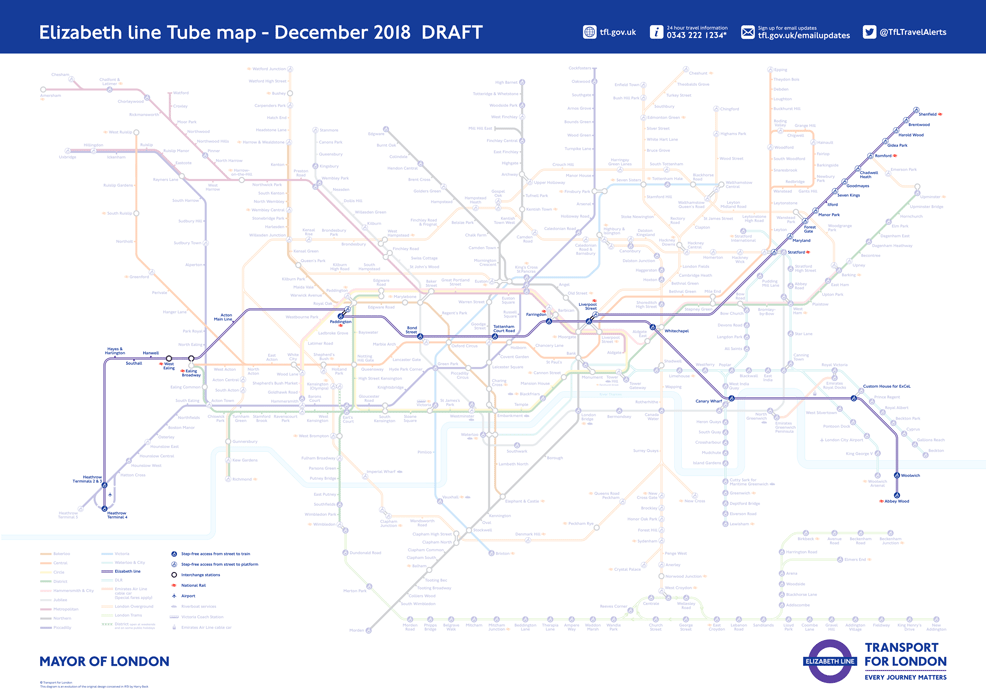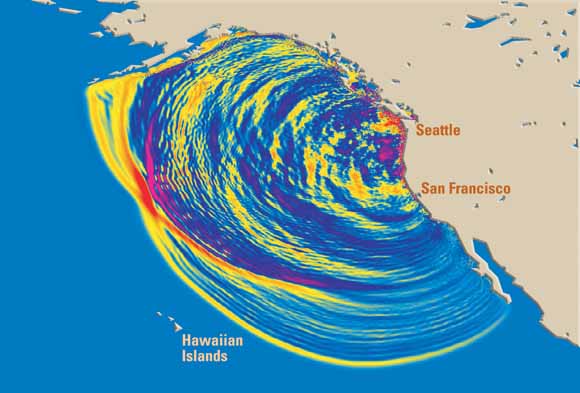
2022-2060
At some point during this period, the USA is struck by the most devastating earthquake in its history
The Cascadia Subduction Zone is a 600 mile-long converging plate boundary stretching from northern California to southern British Columbia. The fault causes a major earthquake about once every 300 years. Compared to other fault lines, this is an unusually long return time – resulting in greater stress build-up and stronger subsequent earthquakes. The last major event (a so-called megathrust quake) took place in 1700 and was estimated to have had a magnitude of at least 9.0 on the Richter scale.
Since then, the movement of the two plates has steadily built up pressure. In the first half of the 21st century, the fault exceeds the vast majority of previous time intervals in recorded history.* During this time, the plates finally slip, resulting in the single most devastating earthquake in United States history.*** It is centred on the state of Oregon, with a duration of several minutes, inflicting deadly damage to major population centres like Portland, Seattle, Olympia and even Vancouver and Victoria. Of course, many structures have been retrofitted and are able to withstand the earthquake, along with the majority of newer buildings. However, years of economic trouble, as well as a general inexperience of large earthquakes, have left many structures vulnerable.
Bridges and highways collapse, while the ground in the Seattle bay area liquefies, dragging buildings underwater. Broken gas mains and power lines spark fires. The quake generates massive tsunamis,* which inundate coastal communities from California to Alaska. These giant waves are sent racing across the Pacific, causing damage as far away as Hawaii and Japan. Millions lose power, while emergency responders struggle to adapt to the scale of the disaster. The death toll quickly reaches into the thousands, while the financial cost exceeds $100 billion.

2022-2037
At
some point during this period, a major earthquake hits California
Experts
had been warning for years that it wasn’t a matter of “if”
– but “when” a major earthquake
would strike the Los Angeles basin.* This particular quake is of sufficient magnitude
to cause many billions of dollars’ worth of economic damage, with much loss of human life. Thousands of buildings
are destroyed and there is widespread damage to roads, bridges and other infrastructure. This disaster is smaller than the Cascadia Subduction Zone earthquake mentioned earlier, but still relatively devastating for southern California.
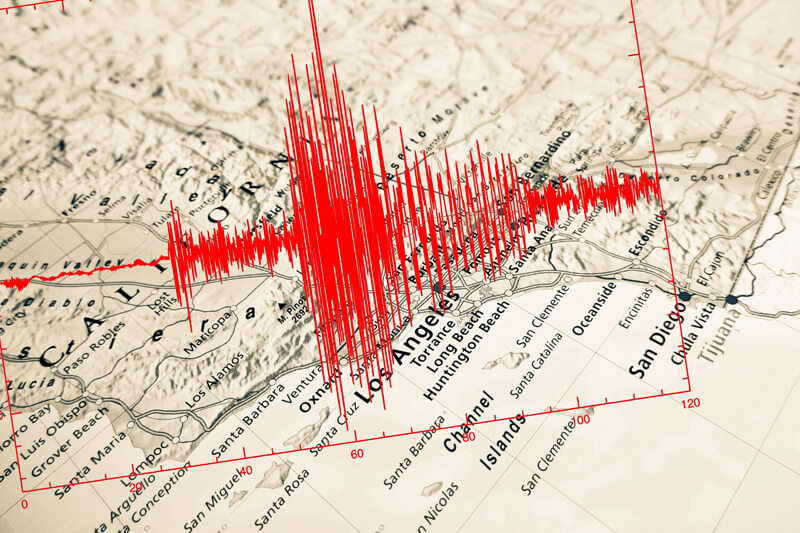
2022
First uncrewed maiden flight of NASA’s Space Launch System (SLS)
The Space Launch System (SLS) is an expendable launch vehicle in the “super heavy-lift” class, developed from 2011 onwards and intended to supersede the retired Space Shuttle as NASA’s flagship vehicle.
Initially designed to carry 70 metric tons (150,000 lb) into low Earth orbit (LEO), the SLS later exceeded that requirement by a significant margin, with a rated payload capacity of 95 metric tons (209,000 lb). Future versions, known as Block 2, would have upgrades including advanced boosters, with an even greater LEO capability of more than 130 metric tons (290,000 lb). For comparison, the earlier Space Shuttle program of 1981 to 2011 had a maximum payload capacity of only 27.5 tons (60,600 lb), or about 21% of the SLS Block 2.
NASA intended for the SLS to become the primary launch vehicle of its deep space exploration plans – including crewed lunar flights of the Artemis program and a subsequent follow-on human mission to Mars.
A first uncrewed maiden flight occurs in 2022,* which is followed by a crewed lunar flyby in 2023. The human missions to lunar orbit and beyond make use of a partially reusable module, known as the Orion Multi-Purpose Crew Vehicle (Orion MPCV), which can support a crew of six on long-duration missions.
While the SLS is extremely powerful (featuring the highest ever total thrust at launch), the project is criticised for its cost, in comparison to new and emerging commercial rockets, which can also provide greater reusability – such as those developed by SpaceX and Blue Origin. This forces a rethink of NASA’s funding as the private sector takes on an increasingly large role in spaceflight, contributing to an industry worth $1 trillion by the late 2030s.
Exascale computers are deployed
An exaFLOP is 1,000,000,000,000,000,000 (a million trillion, or one quintillion) floating point operations per second. In 2022, supercomputers are beginning to reach this speed, which is a 1,000-fold improvement over a petaFLOP machine.
The growth of computing power had followed an exponential trend for many years. However, a slowdown in the rate of progress occurred during the second half of the 2010s. It had earlier been predicted that exaFLOP machines would arrive by the end of the decade, but this schedule appeared to slip as technical and funding issues became apparent, leading to a shortage of the required chips.
IBM unveiled “Summit” – featuring a peak performance of 200 petaFLOPS – which became the world’s fastest supercomputer in June 2018, until surpassed by Japan’s “Fugaku” in June 2020 with 513 petaflops, or about 0.51 exaflops. New challengers waiting in the wings included three exaFLOP machines being developed by China, three by the USA and others by the European Union, India, Japan and Taiwan.
Rumours emerged that China had secretly tested an exaFLOP system – possibly two – in early 2021.* This is officially verified in 2022. The United States also finally reveals “Frontier” and “Aurora” (the former having begun installation in late 2021), with 1.5 and 1.0 exaFLOPS of performance, respectively.**
Exascale computing leads to major advances in astronomy, climate and weather predictions, materials science, medicine, nanotechnology and other fields – allowing simulations of greater scale, complexity and duration than ever before. Subsequent upgrades to existing machines, along with entirely new machines, enable further orders of magnitude gains in performance and pave the way to zettaFLOP supercomputers in the 2030s.
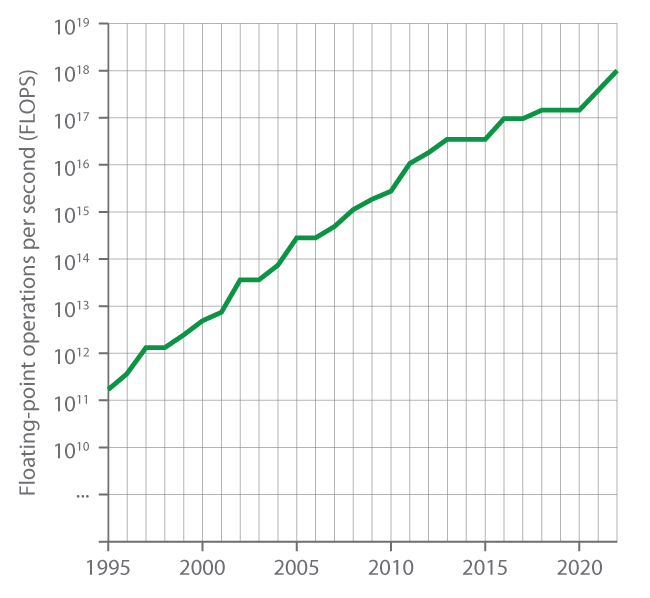
Level 3 autonomous cars go on sale in Europe
In 2022, the first cars with Level 3 autonomy are introduced to Europe.* This follows approval by German authorities the previous year. While vehicles featuring Level 2 autonomy have only partial hands-free driving and require human supervision at all times, Level 3 systems can drive autonomously in certain settings (such as highways) and can make decisions without urging a driver to take control.
Mercedes-Benz redesigned its S-Class sedan to include “Drive Pilot” and in 2021 obtained technical approval from the German Federal Motor Transport Authority, based on the internationally valid UN Regulation 157 for automated lane-keeping systems. The new technology utilised an array of cameras, radars, and sensors to monitor the vehicle’s situation, controlling its speed and distance from other road users, and independently performing evasive or braking manoeuvres without human driver intervention. Real-time information gathered on road geometries, route profiles, traffic events, and traffic signs combined with a high-precision GPS and digital 3D map enabled the car to drive itself for extended periods. Tests showed it could also place an emergency call and unlock doors and windows to give first responders access in case of a health emergency.
Drive Pilot is a much more advanced version of the earlier “Driver Assistance Package” on the S-Class. It adds a new Lidar with 120° operating angle and a camera in the rear window, as well as microphones to detect the lights and sirens from approaching emergency vehicles.
Initially, the system is limited to a top speed of 60 km/h (37 mph) on 13,200 km (8,200 mi) of motorway in Germany. However, it later becomes available in other countries such as the USA and China.*
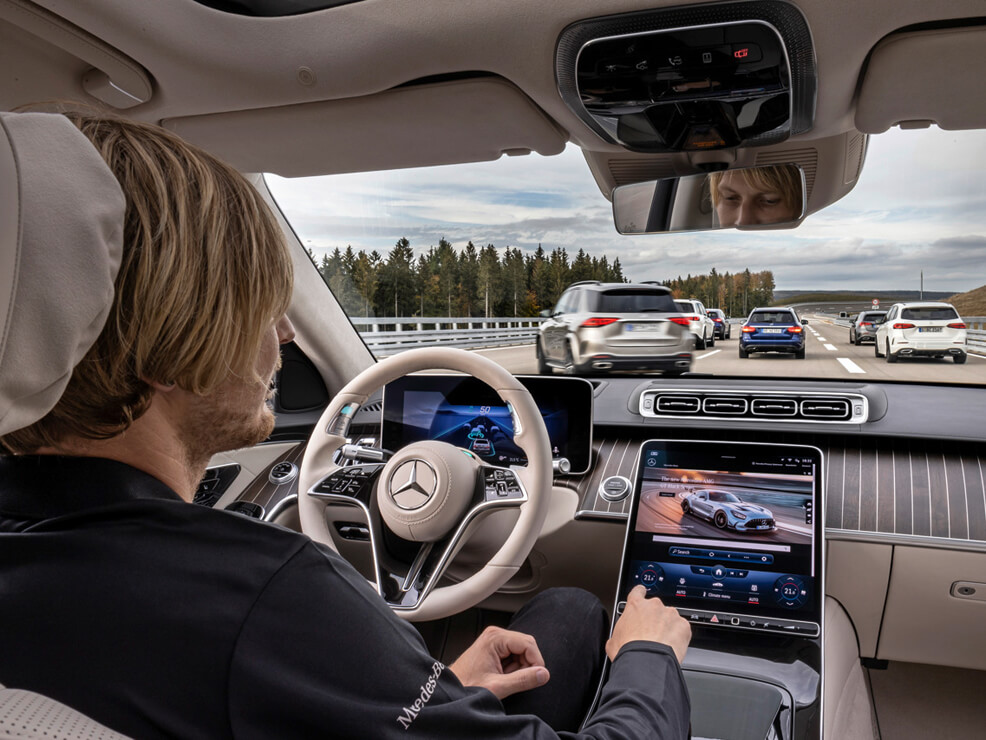
2022: Level 3 autonomous cars go on sale in Europe. Credit: Mercedes-Benz
Crossrail
opens in London
Crossrail is a major new rail line built for London and southeast England. In
development since 1974, it is one of Europe’s largest ever transport projects – designed to boost London’s subway capacity
by over 10% and bringing widespread regenerative benefits. It is officially named as the Elizabeth Line in honour of Queen Elizabeth II.
The line
has a total length of 118 km (73 miles), which includes 42 km (26 miles) of tunnels. It runs from the county of Berkshire
in the west, through to Essex in the east, linking together all the main
economic hubs in the UK capital: Heathrow Airport, the West End, the City
of London and Canary Wharf. Nine-coach trains – each 200 metres (660 ft) long and carrying up to 1,500 people – run at
frequencies of 24 per hour at peak periods. These brand new, longer trains feature walk-through air-conditioned carriages, live travel information and free Wi-Fi. In addition to the rail line itself, the project includes ten new state-of-the-art stations.*
The original
planned schedule was for the first trains to run during 2017. A Comprehensive Spending Review in 2010 – saving over £1bn of the estimated £16bn
projected costs – meant that the first trains to run on the central
section would be delayed until December 2018. This timeline was further delayed until the Autumn of 2019, then again until 2021, and yet again until 2022.*
Click to enlarge
Beijing hosts the Winter Olympics
The 2022 Winter Olympics take place from 4th February to 20th February 2022, in Beijing, China. The elected host city was announced by the International Olympic Committee (IOC) in July 2015.* Beijing, along with Almaty in Kazakhstan, had been considered an outsider before the bidding process began. However, many European cities later withdrew for political or financial reasons. Beijing eventually beat Almaty by 44 votes to 40 with a single abstention. It becomes the first city to host both a summer and winter Games, having hosted the summer games in 2008. It is the third consecutive Olympic Games to be held in Asia, following Pyeongchang 2018 and Tokyo 2021. In addition to Beijing itself there is another city, Zhangjiakou – located 118 miles to the north-west, which hosts the snow events. As with Beijing’s previous games, there are protesters concerned with the country’s human rights record.

Northeast Corridor high-speed train upgrade
In August 2016, U.S. Vice President Joe Biden announced a $2.5 billion federal loan package to pay for upgrades to Acela – the flagship service of America’s national railroad corporation, Amtrak. This route, also known as the Acela Express, ran along the Northeast Corridor (NEC) between Washington, D.C., and Boston via 14 intermediate stops, including Baltimore, Philadelphia, and New York City.
Avelia Liberty – a model of high-speed train marketed by French company Alstom – was chosen to replace the existing Bombardier-Alstom trainsets on the Northeast Corridor, adapted for North American railroad standards. This would occur alongside track, signalling and station improvements.
A total of 28 new trainsets were ordered, 40% more than the previous fleet, providing a half-hourly service between Washington, D.C. and New York City during peak times and an hourly service between New York City and Boston. An improvement in maximum regular speed to 160 miles per hour (257 km/h) would be possible on some portions of the route, with future track and signalling upgrades enabling a maximum of 186 mph (299 km/h).
Each train had more carriages (two power cars and nine passenger cars), one-third more seats and featured a new “anticipative tilting system” to ensure a smoother ride quality. Their lightweight design, combined with minimal aerodynamic drag, would cut energy consumption by 20%. Onboard amenities included adjustable reading lights, disability access, an enhanced food service car, power sockets, USB ports, Wi-Fi, and other conveniences.
Engineers built prototype Avelia Liberty trains for testing in 2020 and Amtrak received delivery of the first trainset in 2021. Customers in the northeastern U.S. begin riding these new high-speed trains in 2022.*
China’s first space station is complete
China’s efforts to develop low Earth orbit (LEO) space station capabilities began with a space laboratory phase, consisting of three “Tiangong” space modules launched in 2011, 2013 and 2015, respectively. These were small and experimental modules intended to demonstrate the rendezvous and docking capabilities needed for a much larger space station complex. They were designed for short stays with crews of three.
The larger, modular space station begins to take shape in 2020, using the previous separate components which are arranged as a Core Cabin Module (CCM), Laboratory Cabin Module I (LCM-1) and Module II (LCM-2), a “Shenzhou” crewed vessel and a cargo craft for transporting supplies and lab facilities.
The multiphase construction program is completed in 2022. The complex weighs approximately 60,000 kilograms (130,000 lb) and supports three astronauts for long-term habitation. It has a design lifetime of ten years.*
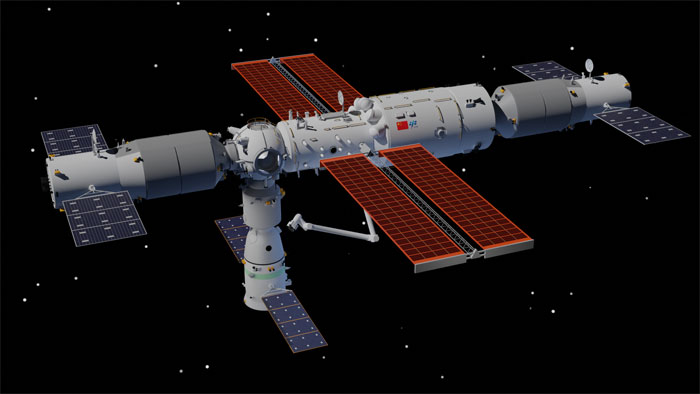
New Horizons completes its study of the Kuiper Belt
In 2015, after a nine year journey across 3 billion km of space, the New Horizons probe arrived at Pluto. It surveyed this region for several months, returning a treasure trove of data and imagery from this previously unexplored world and its five moons. NASA intended to go even further, however, with plans for a close flyby of a Kuiper Belt Object (KBO)* measuring 30–45 km (19–28 mi) in size. This phase of the mission would start in 2019* at a distance of 43.4 astronomical units (AU) from the Sun. By 2022, the KBO study is complete, and New Horizons is heading towards the outermost reaches of the Solar System. By 2038, it will be 100 AU from the Sun.*
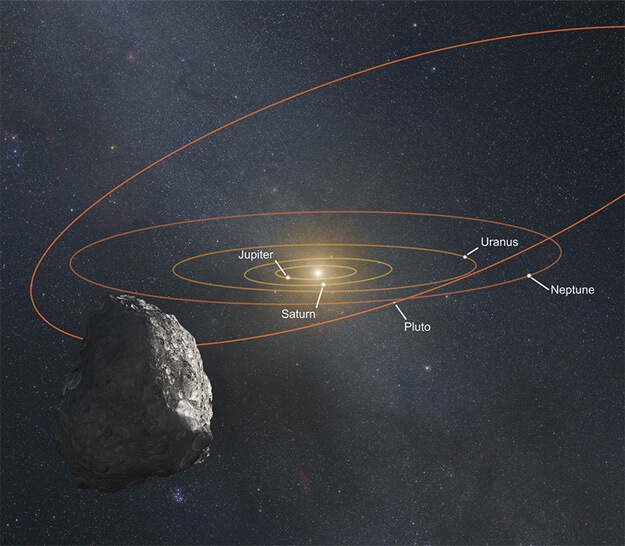
The AIDA mission arrives at Didymos
The Asteroid Impact & Deflection Assessment (AIDA) is a joint NASA/ESA mission to study an Apollo asteroid – Didymos – and its small moon.* It is the first spacecraft to target an asteroid known to have a moon (243 Ida was visited by Galileo, but its moon was a surprise). The Apollo asteroids are a group of near-Earth asteroids that orbit within about 1 AU of the Sun.
The objectives of AIDA are:
• to study and demonstrate the kinetic effects of crashing an impactor into an asteroid moon.
• to test whether a spacecraft could successfully deflect an asteroid on a collision course with Earth.
• to gain new insights into the relationship between an asteroid’s surface and its interior.
• to gain new understanding of how asteroids and binary asteroids form.
The mission consists of two spacecraft: Double Asteroid Redirection Test (DART) and Hera. The former is launched in 2021 and arrives in 2022. The latter is a follow-up study that is launched in 2024 and arrives in 2027.
DART, the first half of the mission, is an impactor spacecraft that targets and deliberately crashes into the small moon of Didymos. The primary asteroid is about 800 m (2,600 ft) in diameter, while its satellite is 170 m (558 ft) in diameter and orbits 1.1 km from the primary. Didymos is not an Earth-crossing asteroid and there is no possibility that the deflection experiment could create an impact hazard.
The DART spacecraft weighs 500 kg (1,100 lb) and impacts at 6 km/s (3.7 mi/s), producing a velocity change of around 0.4 mm per second, which leads to a significant alteration in the mutual orbit of these two objects, but only a minimal change in the heliocentric orbit of the system. DART has a 20-cm aperture CCD camera to autonomously guide itself to the target site.
A secondary spacecraft – a small six-unit CubeSat known as Light Italian CubeSat for Imaging of Asteroids (LICIA) – accompanies DART and is separated shortly before impact to acquire images of the crash and resulting ejecta as it drifts past. DART and its LICIA payload launched together in November 2021, and the impact of the Didymos moon occurs during Autumn 2022.*
This is followed by Hera in 2027, which provides a more detailed analysis of the aftermath, including confirmation of change in the binary system orbit, characterisation of the moon’s volume and surface properties, as well as measurements of the volume and morphology of the DART impact crater.
Didymos made a relatively close approach to Earth in 2003, at a distance of 7.18 million km (4.46 million miles). It makes another close approach in 2123, at a distance of 5.9 million km (3.66 million miles). It also passes close to Mars: 4.69 million km (2.91 million miles) in 2144.
The X-59 Quiet SuperSonic Transport is tested over U.S. cities
The X-59 QueSST (“Quiet SuperSonic Transport”) is an experimental supersonic aircraft developed by Lockheed Martin’s Advanced Development Programs (ADP) for NASA’s Low-Boom Flight Demonstrator program.
The goal of this $250 million project is to reduce the loudness of a sonic boom – the sound produced by the shock waves created whenever an object travels through the air faster than the speed of sound (1,235 km/h, or 767 mph). In the 1950s and 60s, tens of thousands of claims were filed against the U.S. Air Force for noise pollution and damage to property wrought by sonic booms. As a result, from 1973, the Federal Aviation Administration (FAA) prohibited supersonic flight over land.
Concorde, which first flew in 1969 and entered commercial service in 1976, was the only supersonic airliner to carry passengers in regular scheduled service between America and Europe. It had a maximum speed over twice the speed of sound, at Mach 2.04 (1,354 mph or 2,180 km/h at cruise altitude), with seating for up to 128 passengers. However, its supersonic flight capabilities could only be used on the ocean-crossing part of the routes, to prevent sonic boom disturbance over populated areas.
Following the crash of Air France Flight 4590 in July 2000, the general downturn in the aviation industry after the 9/11 attacks of 2001, and the end of maintenance support for Concorde by Airbus, the plane was officially retired from service in October 2003.
Many years would pass without a successor to Concorde. In the meantime, attempts were made to redevelop supersonic technology. “Quiet Spike” was a collaboration between Gulfstream Aerospace and NASA’s Dryden Flight Research Center to investigate the suppression of sonic booms. The project involved a retractable 7.3 m (24 ft), lance-like spike mounted on the nose of an F-15B research testbed aircraft. Made of composite materials, this generated three small shock waves that travelled parallel to each other to the ground, producing less noise than typically built up at the front of supersonic jets. Quiet Spike had its first flight in 2006 and more than 50 subsequent tests, with its team being awarded an Aviation Week Laureate Award in 2008.
Building on the success of Quiet Spike, NASA initiated the X-59 QueSST project in 2016, with Lockheed Martin awarded a preliminary design contract. After a series of wind tunnel tests, a critical design review was successfully held in 2019, with fabrication and wing assembly in 2020. The X-59 would be NASA’s first large-scale experimental aircraft in more than three decades. The final design, at 29 m (94 ft) long and with a 9.0 m (29.5 ft) wingspan, was intended to reach Mach 1.5 or 990 mph (1,590 km/h), and cruise at Mach 1.42 or 940 mph (1,510 km/h) at a maximum altitude of 55,000 ft (16,800 m).
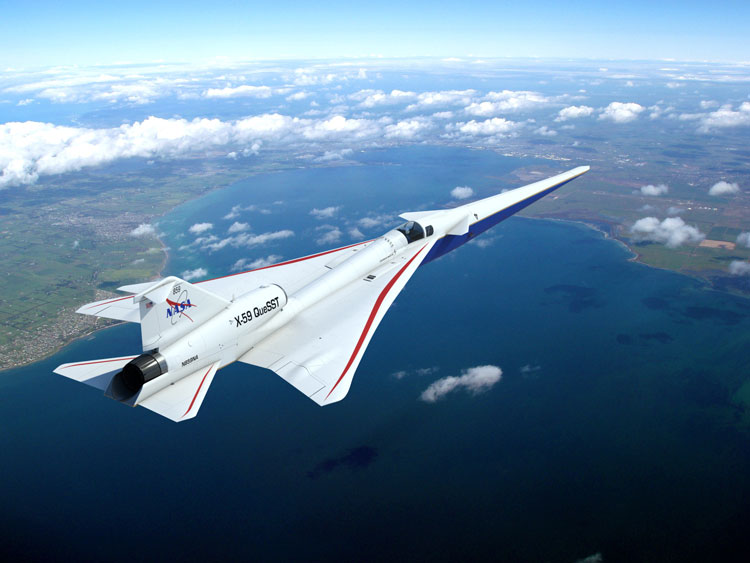
Credits: Lockheed Martin
The long and pointed nose cone required for the X-59 would obstruct a pilot’s forward vision. To compensate for this, an enhanced flight vision system (EVS), consisting of a forward 4K camera with 33° by 19° angle of view, was fitted to the aircraft, combined with a multispectral imaging system beneath the nose to be used for landing.
Following the completion of Lockheed Martin’s work in late 2021, NASA would perform additional tests to prove the quiet supersonic technology worked and was safe to operate in the National Airspace System. Beginning in 2022,* NASA flies the X-59 over a number of U.S. cities and collects data about community responses to the flights. This data is provided to both U.S. and international regulators for their use in considering new sound-based rules regarding supersonic flight over land.
During these tests, the X-59 creates only 75 Perceived Level decibels (PLdB) on the ground, about as loud as closing a car door. This makes it less than 1/1000th as noisy as earlier supersonic planes such as Concorde that caused booms of up to 110 PLdB (decibels are measured on a logarithmic scale). This breakthrough is achieved by its long, narrow airframe and canards to keep the shock waves from coalescing.*
Many more years of development are required for the next generation of supersonic aircraft to become widespread. However, the X-59 marks a pivotal milestone for this technology – it paves the way to new commercial cargo and passenger markets in faster-than-sound air travel with fewer restrictions on routes over land.
NASA’s community-response flight tests are used by the International Civil Aviation Organisation’s (ICAO) Committee on Aviation Environmental Protection (CAEP13) to establish a sonic boom standard in 2025.
Driverless hover-taxis are operational in Dubai
In 2022, a driverless flying taxi service becomes fully operational in Dubai, United Arab Emirates (UAE).* This follows testing that began in late 2017 and ran for five years. The Autonomous Air Taxi (AAT), as it is known, is supplied by Volocopter – a Germany-based specialist manufacturer – working with Dubai’s Road and Transport Authority.
The first service of its kind in the world, the AAT is a two-seater aerial vehicle resembling a cross between a helicopter and large drone. It has 18 rotors and fully redundant power trains, with an intelligent autonomous control system able to transport people without human intervention or a pilot. It can travel at speeds of up to 100 km/h (62 mph) using clean electricity and a battery quick-charge and plug-in system, while also featuring low noise levels.
The AAT service is made available to the public through a smart mobility app. This allows customers to book flights, receive booking reference details and track the route of their vehicle. The AAT is part of an increasing trend for automated transport in Dubai – more than a quarter of all passenger vehicles in the city are self-driving by 2030.*
First flight of Ariane 6
Ariane 6 is a launch vehicle developed by ArianeGroup under the authority of the European Space Agency (ESA). It replaces the aging Ariane 5 – which had operated since the late 1990s – and is designed to be more modular, flexible, and cost-competitive.
The rocket stands 63 m (207 ft) high, making it slightly taller than its predecessor and with a more slender appearance. It comes in two variants:
• Ariane 62, with two P120 boosters. This weighs around 530 tonnes (1,170,000 lb) at liftoff and is intended mainly for government and scientific missions, launching payloads of up to 5,000 kg (11,000 lb) into geostationary transfer orbit (GTO), and 10,350 kg (22,820 lb) into low Earth orbit (LEO).
• Ariane 64, with four P120 boosters. This is heavier, at 860 tonnes (1,900,000 lb) and intended for commercial dual-satellite launches of up to 11,500 kg (25,400 lb) into GTO, and 21,500 kg (47,400 lb) into LEO.
The lower cost of Ariane 6, about half that of Ariane 5, enables double the number of launches per year. Following delays due to COVID-19, a first flight occurs in late 2022.* Ariane 6 had been due to launch broadband satellites for OneWeb but the company filed for bankruptcy in March 2020. However, additional contracts with companies such as Eutelsat, as well as France’s national space agency (CNES) and the European Union, enable various commercial launches to proceed. Ariane 5 is phased out in 2023. Subsequent variants of Ariane 6 in the late 2020s include reusable components in order to become more competitive with the likes of SpaceX and Blue Origin.
First flight of the New Glenn reusable rocket
New Glenn (named after the late U.S. astronaut, John Glenn) is a heavy-lift orbital launch vehicle developed by Blue Origin, the aerospace company founded by Amazon boss Jeff Bezos. The booster stage is designed to be reusable, cutting launch costs and making it a competitor to SpaceX.
Previously, Blue Origin had developed the New Shepard – a vertical-takeoff, vertical-landing (VTVL), crew-capable rocket. Prototype testing in 2006, followed by full-scale engine development in the early 2010s, led to a first flight in 2015. Reaching an altitude of 93 km (58 miles), this uncrewed demonstration was deemed partially successful, as the onboard capsule was recovered via parachute landing, while the booster stage crashed, and was not recovered. By 2019, a further 11 test flights had taken place, all successfully landing and recovering the booster stage.
The New Shepard, with a height of 18 m (59 ft) and only a tiny payload,* fell into the sub-orbital class of rockets. By contrast, its successor would be more than five times as tall on the launch platform. New Glenn, standing 95 m (313 ft), dwarfed the earlier New Shepard and was designed to carry 45,000 kg (99,000 lb) to low-Earth orbit (LEO) and 13,000 kg (29,000 lb) to geosynchronous transfer orbit (GTO).
Blue Origin began working on the New Glenn in 2012, and publicly revealed its design and specifications in 2016. The vehicle, described as a two-stage rocket with a diameter of 7 m (23 ft), would be powered by seven BE-4 engines (equivalent to 21 Boeing 747s). Bezos now reportedly sold $1 billion worth of Amazon.com stock annually – a figure that doubled by the end of the decade – in order to fund Blue Origin.
By 2019, Blue Origin had gained five customers for New Glenn flights, including a multi-launch contract with Telesat for its broadband constellation. All of these launches would feature a reusable first stage, meaning the booster would return to Earth and land vertically,* just like the New Shepard sub-orbital launch vehicle that preceded it.
A first launch of the New Glenn occurs in 2022,* from a reconstructed and improved Launch Complex 36 (LC-36) in Florida. Following stage separation, the first stage flies back to Earth and lands nearly 1,000 km downrange on a moving ship. The second stage engines ignite and the 7-metre fairing separates. The mission is complete when the payload is delivered safely to orbit.
Alongside the New Glenn, Jeff Bezos had even greater ambitions. In 2019, he unveiled Blue Origin’s longer-term vision for space, which included a lunar lander known as Blue Moon. This could deliver up to 4,500 kg (9,900 lb) to the Moon’s surface and potentially astronauts too, using a New Glenn as the launch vehicle – in combination with ascent and transfer stages developed by other companies.**
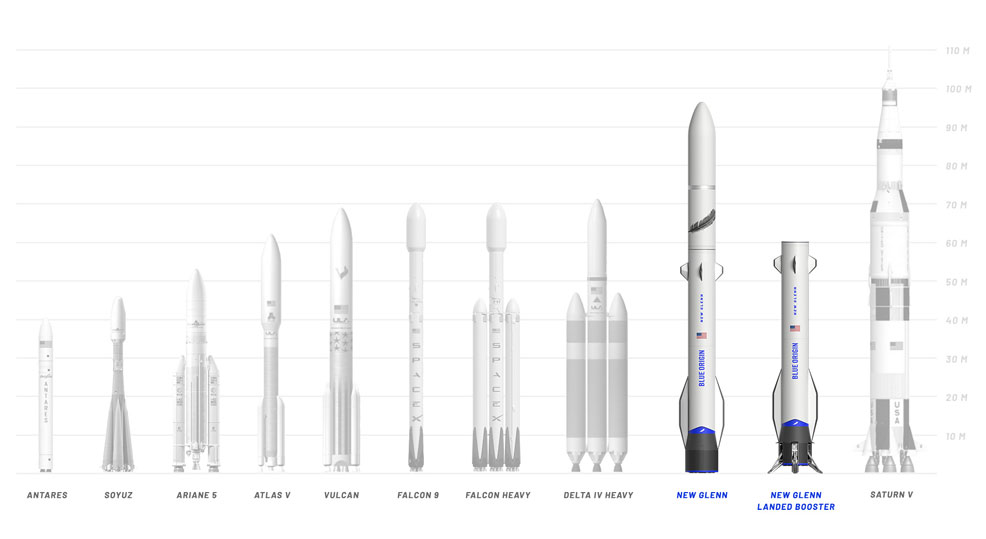
The first legged robot on the Moon
Asagumo is a spider-like robot developed by UK firm Spacebit and designed to explore the Moon’s surface. Its cube-shaped body is just 10 cm x 10 cm and its total weight is only 1.3 kg, making it the smallest rover to ever explore the lunar environment.
Despite the robot’s small size, it can explore parts of the Moon that other landers cannot reach, using four legs for greater mobility. It lands in a region called Lacus Mortis (“Lake of Death”), a plain of basaltic lava flows in the northeastern part of the Moon, where it operates for up to 13 days. Here it uses 3D LIDAR to gather a range of data. It also comes equipped with cameras including full HD video.
The mission includes several firsts – it becomes the first to launch aboard the Vulcan Centaur, a new two-stage-to-orbit launch vehicle under development by United Launch Alliance (ULA) from 2014-2021; the first mission for Peregrine (the spacecraft that carries and deploys the Asagumo robot); the first trip to the Moon’s surface by a UK-built craft; and the first time a legged robot has explored another world.*
Although it travels only 10 metres in two weeks, subsequent versions are launched later in the decade with more advanced capabilities. These missions allow multiple robots to travel greater distances and to investigate lunar lava tubes to see if they are viable locations in which to build future lunar habitats.
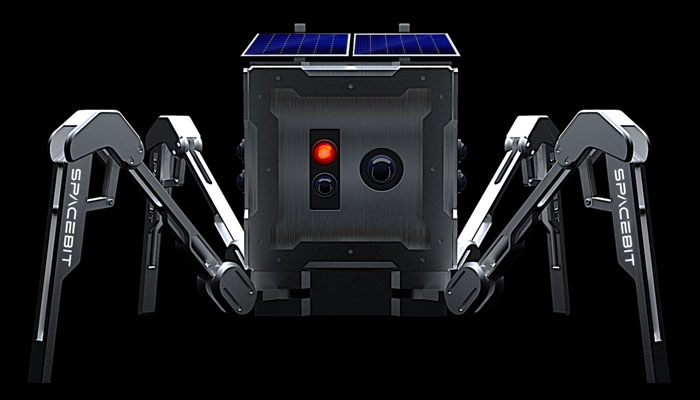
Credit: Serhii Harbaruk, CC BY-SA 4.0, via Wikimedia Commons
Qatar
hosts the FIFA World Cup
Qatar is
a tiny Persian Gulf nation of just 1.7 million people. It has the second
highest GDP per capita in the world, owing to its massive natural gas
deposits. It becomes the first country in the Middle East to host the
World Cup.
Summers
in Qatar can reach 50°C. However, each stadium employs state-of-the-art
cooling technology, capable of reducing temperatures by over 20 degrees
celsius. The upper tiers can be disassembled after the tournament and
donated to countries with less developed sports infrastructure.
One of
the stadia includes a 420,000 sq ft media facade, covering almost the
whole exterior. This futuristic screen displays news, adverts, tournament
information and live matches to viewers outside.*
Germany
phases out nuclear energy
After the
Fukushima disaster in Japan, a number of countries began to reconsider
their use of nuclear power. Germany was among the nations to abandon
this form of energy altogether. Its government had originally planned
to keep plants running until 2036, but this schedule was brought forward.
Prior to
this phasing out, nuclear power in Germany had produced 25%
of the country’s electricity and the industry employed 30,000 people.
The shortfall would be made up by renewables, a temporary boost in coal, and a cutting of electricity usage by 10% via more efficient machinery and buildings.
Seven nuclear plants in Germany had been temporarily shut down for testing in 2011,
and an eighth taken offline for technical problems. These would remain closed
permanently. The remaining nine plants are shut down by December 2022.*
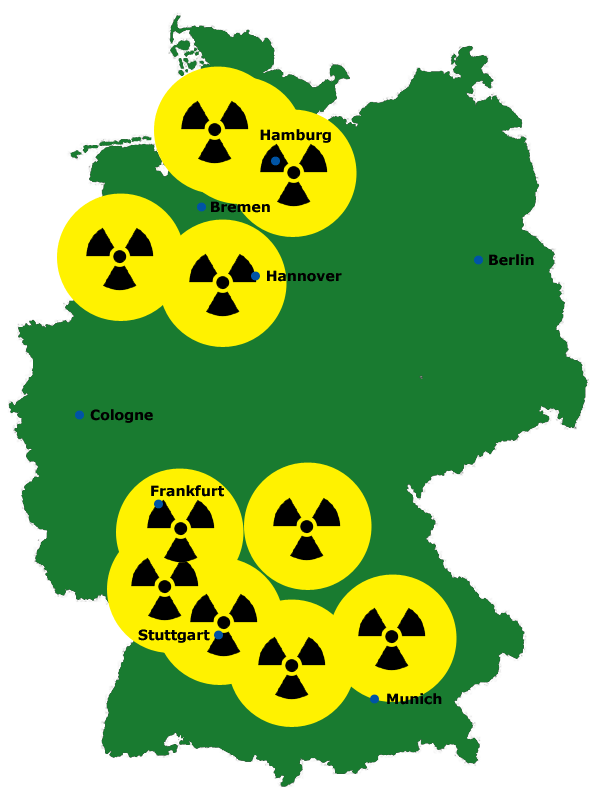
Germany’s
nuclear plants in 2011, showing the zones of radiation in a potential
worst-case scenario,
as happened with Fukushima. According to this map,
large areas of north and south Germany would
be made uninhabitable if
all plants were to meltdown.
